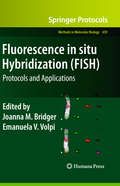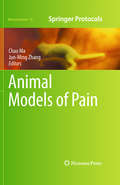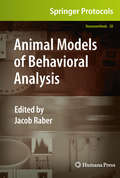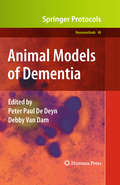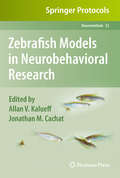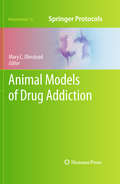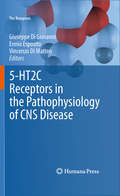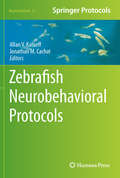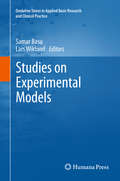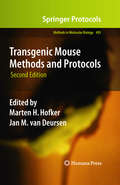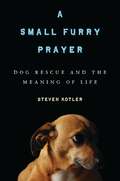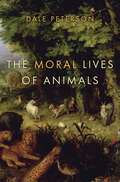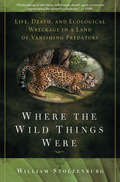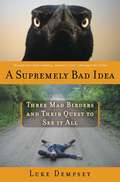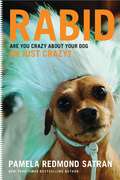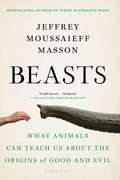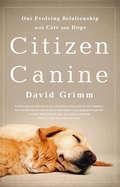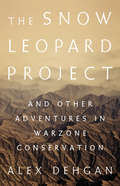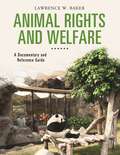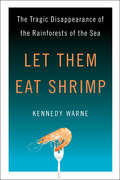- Table View
- List View
Fluorescence in situ Hybridization: Protocols and Applications (Methods in Molecular Biology #659)
by Joanna M. Bridger and Emanuela V. VolpiFluorescence in situ Hybridization (FISH) belongs to that special category of well-established molecular biology techniques that, since their inception a few decades ago, have succeeded in keeping a prominent position within the constantly expanding list of laboratory pro- dures for biomedical research and clinical diagnostics. The design simplicity and cost-effectiveness of the early FISH protocols, combined with the signifcant acceleration of discoveries in related technical areas such as fuor- cence microscopy, digital imaging, and nucleic acid technology have prompted the div- sifcation of the original technique into an outstanding number of imaginative and useful applications, and thus have not only held back its outmoding but have also promoted its expansion into different areas of basic and applied research in the post-genomic era. The 34 chapters included in this book aim at portraying the vibrant complexity and diversity of the current FISH protocol landscape, providing cutting-edge examples of va- ous applications for genetic and developmental research, cancer research, reproductive medicine, diagnostic and prognostic purposes, microbial ecology, and evolutionary st- ies. The book is divided in four parts: (I) Core Techniques, (II) Technical Advancements and Novel Adaptations, (III) Translational FISH: Applications for Human Genetics and Medicine, and (IV) Protocols for Model Organisms.
Stem Cells & Regenerative Medicine: From Molecular Embryology to Tissue Engineering (Stem Cell Biology and Regenerative Medicine)
by Krishnarao Appasani and Raghu K. AppasaniDefined as, “The science about the development of an embryo from the fertilization of the ovum to the fetus stage,” embryology has been a mainstay at universities throughout the world for many years. Throughout the last century, embryology became overshadowed by experimental-based genetics and cell biology, transforming the field into developmental biology, which replaced embryology in Biology departments in many universities. Major contributions in this young century in the fields of molecular biology, biochemistry and genomics were integrated with both embryology and developmental biology to provide an understanding of the molecular portrait of a “development cell.” That new integrated approach is known as stem-cell biology; it is an understanding of the embryology and development together at the molecular level using engineering, imaging and cell culture principles, and it is at the heart of this seminal book. Stem Cells and Regenerative Medicine: From Molecular Embryology to Tissue Engineering is completely devoted to the basic developmental, cellular and molecular biological aspects of stem cells as well as their clinical applications in tissue engineering and regenerative medicine. It focuses on the basic biology of embryonic and cancer cells plus their key involvement in self-renewal, muscle repair, epigenetic processes, and therapeutic applications. In addition, it covers other key relevant topics such as nuclear reprogramming induced pluripotency and stem cell culture techniques using novel biomaterials. A thorough introduction to stem-cell biology, this reference is aimed at graduate students, post-docs, and professors as well as executives and scientists in biotech and pharmaceutical companies.
Animal Models of Pain (Neuromethods #49)
by Chao Ma and Jun-Ming ZhangWith the loss of work days, the price of health care and payments for compensation, litigation, and malpractice, and the overwhelming cost of human suffering, chronic pain syndromes affect humanity enormously on both an economic and personal level. In Animal Models of Pain, expert investigators in the field provide a consolidated review of the current state of pain research by capturing the diversity of animal models that are used to investigate pain mechanisms, which range from surgical incision to mechanical compression and from spinal cord injury to cutaneous/local inflammation and beyond. As a volume in the respected Neuromethods series, this book delivers its vital content through detailed descriptions of a wide variety of step-by-step laboratory methods. Authoritative and cutting-edge, Animal Models of Pain seeks to lead scientists closer to the ultimate goal of improving the quality of life and relieving the unbearable burden of chronic pain for millions of people throughout the world.
Animal Models of Behavioral Analysis (Neuromethods #50)
by Jacob RaberDespite the difficulty in comparing clinic-based human tests with animal model testing, there is still great value in pursuing translational approaches, as tests and treatment strategies might be developed to improve brain function in humans suffering from neurological conditions and knowledge obtained from human behavioral studies can be used to further improve the animal models of behavioral analysis. In Animal Models of Behavioral Analysis, expert neuroscientists focus on approaches to translate and compare behavioral tests used in animals with those used in humans not only to increase our understanding of brain function across species but also to provide objective performance measures and bridge the gap between behavioral alterations in humans with cognitive disorders and the correlating animal models of these conditions. Written in the Neuromethods series format, the chapters provide authoritative reviews of many commonly used approaches in the field today. Provocative and cutting-edge, Animal Models of Behavioral Analysis seeks to aid researchers in further developing these vital techniques in an effort to advance studies in both the clinic and the laboratory.
Animal Models of Dementia (Neuromethods #48)
by Peter Paul De Deyn and Debby Van DamWith an ever-increasing elderly population and the resultant rising levels of dementia-related disorders, preclinical research based on animal models is pivotal to our knowledge of underlying molecular mechanisms and drug discovery aiming at the development of therapeutic strategies alleviating or preventing the neurological devastation. In Animal Models of Dementia, expert researchers provide contributions that stress the importance of extensively validated animal models in drug discovery and development in order to predict clinical activity. Beginning with general aspects of animal modeling, related ethical issues, and essential methodological considerations, the highly detailed volume then continues with various levels of model validation, including pathological, behavioral, neurochemical, pharmacological, and imaging aspects, followed by sections focused on specific disorders, such as Alzheimer’s disease, Parkinson’s disease, metachromatic leukodystrophy and adrenoleukodystrophy, amyotrophic lateral sclerosis, frontotemporal dementia as well as vascular dementia and more. As a volume in the renowned Neuromethods series, this book offers a detailed, yet accessible, overview of currently available animal models in the field of dementia research, and touches, as well, upon more general areas linked to the development and use of animal models. Comprehensive and efficient, Animal Models of Dementia will significantly aid both experienced animal researchers as well as investigators on the verge of beginning animal model-based dementia research.
Zebrafish Models in Neurobehavioral Research (Neuromethods #52)
by Allan V. Kalueff and Jonathan M. CachatAnimal models have traditionally played a crucial role in improving our understanding of brain pathogenesis. Zebrafish (Danio rerio) have generated considerable discoveries in the areas of genetics, embryology, endocrinology, and neuroscience. Zebrafish Models in Neurobehavioral Research emphasizes the growing importance of zebrafish in neurobehavioral research and portrays an extensive, thorough perspective on the emergence of zebrafish as robust and translational models. Written by leading international experts, the book covers major topics ranging from stress to learned recognition of environment, encompassing a wide spectrum of the utility of zebrafish within neurobiological disciplines. The chapters provide authoritative reviews of many zebrafish paradigms commonly used in the field today. This book will be a useful guide for zebrafish researchers, and will complement another related book from the popular Neuromethods series, Zebrafish Neurobehavioral Protocols. Comprehensive and up-to-date, Zebrafish Models in Neurobehavioral Research serves as an ideal resource for scientists new to the field as well as for established researchers seeking valuable insight into the growing utility of zebrafish in neuroscience.
Animal Models of Drug Addiction (Neuromethods #53)
by Mary C. OlmsteadOur understanding of addiction and how it is treated has advanced remarkably over the past decades, and much of the progress is related directly to animal research. This is true for both the behavioural aspects of drug use as well as the biological underpinnings of the disorder. In Animal Models of Drug Addiction, experts in the field provide an up-to-date review of complex behavioural paradigms that model different stages of this disorder and explain how each test is used to effectively replicate the progression of drug addiction. This detailed and practical book begins with the most common laboratory measures of addiction in animals, including intracranial self-stimulation (ICSS), drug self-administration, place conditioning, and sensitization. Later chapters describe how these paradigms are used to model the progression of drug addiction, providing insight into the clinical symptomatology of addiction from acquisition of drug use through compulsive drug taking to withdrawal and relapse. Written for the popular Neuromethods series, the contributions offer both methodological detail and a theoretical perspective, appealing to readers familiar with preclinical research on drug addiction as well as those who are newcomers to the field. Cutting-edge and authoritative, Animal Models of Drug Addiction will serve as a basis for future vital research that links the bench to the bedside in the crucial treatment of drug addiction.
5-HT2C Receptors in the Pathophysiology of CNS Disease (The Receptors #22)
by Giuseppe Di Giovanni, Ennio Esposito and Vincenzo Di MatteoPart of Springer’s “The Receptors,” series, this text is the first ever overview on the research of 5-HT2c receptors. 5-HT2c receptor research has been productive for twenty-five years, but recent years have seen an extraordinary increase in both amount produced and insight gained. 5-HT2c is a prominent central serotonin receptor subtype widely expressed within the central and the peripheral nervous system and is thought to play a key role in the regulation of numerous behaviors. This text covers the molecular, cellular, anatomical, biochemical and behavioral aspects of this receptor, highlighting its distinctive regulatory properties and the emerging functional significance of constitutive activity and RNA-editing in vivo. It also investigates the receptors’ therapeutic potential in many diseases, treated individually in separate chapters, including depression, drug abuse, schizophrenia, eating disorders, Parkinson’s disease, Prader-Willi Syndrome, Alzheimer’s disease and epilepsy.
Zebrafish Neurobehavioral Protocols (Neuromethods #51)
by Allan V. Kalueff and Jonathan M. CachatAs a model organism, zebrafish (Danio rerio) offer an opportunity to perform steadfast scientific investigations in a robust and high-throughput manner. In Zebrafish Neurobehavioral Protocols, experts in the field provide a series of detailed behavioral protocols dealing with the major current research areas in the field of behavioral neuroscience. The chapters discuss the use and interpretation of video-aided quantification of zebrafish behaviors, describe novel assays commonly used to quantify emotionality, learning, memory, and social behaviors in zebrafish, and instruct how to quantify endocrine responses and correlate them with behavior. Written in the Neuromethods series format, the chapters provide authoritative reviews of many commonly used approaches in the field today. This "how to" book will be a useful practical guide for zebrafish researchers and will complement another related book from this series, Zebrafish Models in Neurobehavioral Research. Cutting-edge and timely, Zebrafish Neurobehavioral Protocols serves as an excellent compilation epitomizing the growing potential of zebrafish in modern scientific inquiry.
Studies on Experimental Models (Oxidative Stress in Applied Basic Research and Clinical Practice)
by Samar Basu and Lars WiklundThere is a widespread consensus that use of antioxidants as a therapeutic approach may counteract free radical mediated pathologies. However, the role of antioxidants in normal physiology and redox signaling is still in its infancy. Since oxidative stress is related to various diseases and pathologies, scientists are eager to study the disease in humans, but it is not always ethical to study all the aspects of the disease in humans. Thus, it becomes mandatory to study the disease process and the mechanisms behind it through experimental models which generally involve animals, in vitro/cell culture studies, primates and even humans to a certain extent. Studies on Experimental Models contains data on the experimental models or review of such models of oxidative stress in various diseases. It is structured into six sections, which are as follows: diabetes, cardiovascular, neurology, ocular diseases, toxicology/environmental and in vitro/tissue culture. Each section presents a sketch of models in humans, animals and in vitro methods. Taken together, they comprise a valuable reference for basic and clinical scientists, one aimed at contributing to the advancement of oxidative stress research using appropriate animal models.
Transgenic Mouse Methods and Protocols (Methods in Molecular Biology #693)
by Marten H. Hofker and Jan DeursenThe generation of genetically modified mice is absolutely crucial to gene function studies today, primarily because mice are genetically similar to man and because gene function studies in mice are in the context of a whole organism, making them particularly useful. In Transgenic Mouse Methods and Protocols, Second Edition, expert research explore current advances in the field through detailed laboratory protocols. Chapters provide a general introduction outlining how to deal with mice and how to generate transgenic mouse models, explore the generation of conditional and induced knockout and transgenic mice, and offer alternative routes to studying gene function in mice. Composed in the highly successful Methods in Molecular Biology™ series format, each chapter contains a brief introduction, step-by-step methods, a list of necessary materials, and a Notes section which shares tips on troubleshooting and avoiding known pitfalls. Comprehensive and state of the art, Transgenic Mouse Methods and Protocols, second Edition is the ideal guide for all researchers interested in the latest information about the production and analysis of transgenic and knockout mice.
Walking Home: A Traveler in the Alaskan Wilderness, a Journey into the Human Heart
by Lynn SchoolerIn the spring of 2007, hard on the heels of the worst winter in the history of Juneau, Alaska, Lynn Schooler finds himself facing the far side of middle age and exhausted by laboring to handcraft a home as his marriage slips away. Seeking solace and escape in nature, he sets out on a solo journey into the Alaskan wilderness, traveling first by small boat across the formidable Gulf of Alaska, then on foot along one of the wildest coastlines in North America. Walking Home is filled with stunning observations of the natural world, and rife with nail-biting adventure as Schooler fords swollen rivers and eludes aggressive grizzlies. But more important, it is a story about finding wholeness-and a sense of humanity-in the wild. His is a solitary journey, but Schooler is never alone; human stories people the landscape-tales of trappers, explorers, marooned sailors, and hermits, as well as the mythology of the region's Tlingit Indians. Alone in the middle of several thousand square miles of wilderness, Schooler conjures the souls of travelers past to learn how the trials of life may be better borne with the help and community of others. Walking Home recalls Jonathan Raban's Passage to Juneau or Jon Krakauer's Into the Wild, but with a more successful outcome. With elegance and soul, Schooler creates a conversation between the human and the natural, the past and present, to investigate what it means to be a part of the flow of human history.
A Small Furry Prayer: Dog Rescue and the Meaning of Life
by Steven KotlerSteven Kotler was forty years old, single, and facing an existential crisis when he met Lila, a woman devoted to animal rescue. "Love me, love my dogs" was her rule, and Steven took it to heart. Spurred to move by a housing crisis in Los Angeles, Steven, Lila, and their eight dogs-then ten, then twenty, and then they lost count-bought a postage-stamp-size farm in Chimayo, New Mexico. A Small Furry Prayer chronicles their adventures at Rancho de Chihuahua, the sanctuary they created for their special needs pack. While dog rescue is one of the largest underground movements in America, it is also one of the least understood. An insider look at the "cult and culture" of dog rescue, A Small Furry Prayer weaves personal experience, cultural investigation, and scientific inquiry into a fast-paced, fun-filled narrative that explores what it means to devote one's life to the furry and the four-legged. Along the way, Kotler combs through every aspect of canine-human relations, from humans' long history with dogs through brand-new research into the neuroscience of canine companionship, in the end discovering why living in a world made of dog may be the best way to uncover the truth about what it really means to be human.
The Moral Lives of Animals
by Dale PetersonWild elephants walking along a trail stop and spontaneously try to protect and assist a weak and dying fellow elephant. Laboratory rats, finding other rats caged nearby in distressing circumstances, proceed to rescue them. A chimpanzee in a zoo loses his own life trying to save an unrelated infant who has fallen into a watery moat. The examples above and many others, argues Dale Peterson, show that our fellow creatures have powerful impulses toward cooperation, generosity, and fairness. Yet it is commonly held that we Homo sapiens are the only animals with a moral sense-that we are somehow above and apart from our fellow creatures. This rigorous and stimulating book challenges that notion, and it shows the profound connections-the moral continuum-that link humans to many other species. Peterson shows how much animal behavior follows principles embodied in humanity's ancient moral codes, from the Ten Commandments to the New Testament. Understanding the moral lives of animals offers new insight into our own.
Where the Wild Things Were: Life, Death, and Ecological Wreckage in a Land of Vanishing Predators
by William StolzenburgFor years, predators like snow leopards and white-tipped sharks have been disappearing from the top of the food chain, largely as a result of human action. Science journalist Will Stolzenburg reveals why and how their absence upsets the delicate balance of the world's environment.
A Supremely Bad Idea: Three Mad Birders and Their Quest to See It All
by Luke DempseyIt began with a weekend house; then weekend trips. Then the occasional meeting rearranged in favor of a morning in Central Park, just while the spring migration was on. Before Luke Dempsey knew it, he had spiraled down into full-on birding mania - finding himself riding along with two like-minded maniacs in a series of disreputable rental cars and even nastier motel rooms, charging madly around the country in search of its rarest and most beautiful birds. A Supremely Bad Idea is the story of that search, and those birds, and those maniacs, and that country, and (to a much lesser extent) those rental cars. In Texas, the three obsessives go in search of the deeply endangered Golden-cheeked Warbler, which lives on the side of a hill near a waterfall; in Michigan, they see the pretty-much-extinct Kirtland's Warbler, which insists on short pine trees for nesting and lots of "quiet, please"; in Arizona, they see the very private Elegant Trogon after a very public fight with a birding guide. Along the way, Dempsey narrates an amazing sequence of encounters with nature and humanity, including a man building a 40-foot ark in his Seattle backyard; a beautiful woman who shows him how to kill 4,000 Cowbirds a year; a coyote (and his human smuggler) on the Rio Grande; and everywhere, these incandescent birds flitting across the range of his binoculars, and his heart. With the casual erudition of a Bill Bryson and the comic timing of a British David Sedaris, Dempsey demonstrates why so many millions of birders care so much about birds - and why, perhaps, the rest of us should, too.
Rabid: Are You Crazy About Your Dog or Just Crazy?
by Pamela Redmond SatranDogs now dominate the $48 billion a year pet business, with nearly 40 percent of American households owning a total of 77.5 million dogs. Dog products, dog services, dog admiration - okay, let's call it dog worship - has become totally over the top. If you have a dog-obsessed friend or relative, you've seen the phenomenon. Or maybe you're a dog owner and lover, and have found yourself buying, doing, craving, needing dog-related items (doggie treadmills, dog swimming pools, caffeine-free doggie java) and services (doggie massage, dog perfume, aromatherapy, hair coloring, and yes, doggie tattoos) that would have seemed outlandish a generation ago when applied to your everyday household Rover.But Rover isn't called Rover anymore, he's called Rufus. Or Lola, according to the Tumblog Hipster Puppies. In fact, all Top Ten Dog Names are people names. And the canine Rufus doesn't stay home alone all day; he goes to Doggie Daycare. Eats brightly-frosted martini-shaped doggie treats. Wears designer tutus. Gets married on the beach. Has...Well, you'll see. Rabid is a catalog of how over-the-top our dog obsession had become. It's a book aimed not only at dog skeptics but at dog lovers and the people who love them. Funny, fun, yet holding a mirror up to our dog-centered society, Rabid will help us laugh at our own behavior and at the even-more-insane antics of all those other dog people. And it will give some solace to the 60 percent of us who've so far evaded America's dog mania. Photos throughout.
Beasts: What Animals Can Teach Us About the Origins of Good and Evil
by Jeffrey Moussaieff MassonBestselling author Jeffrey Masson shows us what the animals at the top of the food chain-orca whales, big cats, etc.-can teach us about the origins of good and evil in ourselves.In his previous bestsellers, Masson has showed us that animals can teach us much about our own emotions-love (dogs), contentment (cats), and grief (elephants), among others. In Beasts, he demonstrates that the violence we perceive in the "wild†? is a matter of projection. Animals predators kill to survive, but animal aggression is not even remotely equivalent to the violence of mankind. Humans are the most violent animals to our own kind in existence. We lack what all other animals have: a check on the aggression that would destroy the species rather than serve it. In Beasts, Masson brings to life the richness of the animal world and strips away our misconceptions of the creatures we fear, offering a powerful and compelling look at our uniquely human propensity toward aggression.
Your Dog: Hundreds of Secrets, Surprises, and Solutions for Raising a Happy, Healthy Dog
by Marty BeckerThrough surprising facts, moving stories and tested solutions, the veterinary expert from Good Morning America and The Dr. Oz Show will give every dog owner the secrets to raising a healthy, well-behaved dog. For anyone who owns a dog or is thinking about getting one, Dr. Marty Becker's manual is a must-have guide to anything and everything canine. In Your Dog: The Owner's Manual, the "best-loved family doctor for pets" shares insider secrets on how to keep puppy problems from becoming doggy disasters and how to best bond with your dog through helpful, easily accessible tips and tricks on how to:· Find the right dog for your family's lifestyle· Solve the most annoying behavioral problems · Make sure your dog gets the exercise he needs · Use food puzzles to prevent weight gain · Prevent dog health problems · Save money on medication, both traditional and alternative For seasoned dog owners as well as those looking to adopt a new friend, Dr. Becker provides all the insight that makes for both happy owners and happy dogs.
Citizen Canine: Our Evolving Relationship with Cats and Dogs
by David GrimmDogs are getting lawyers. Cats are getting kidney transplants. Could they one day be fellow citizens?Cats and dogs were once wild animals. Today, they are family members and surrogate children. A little over a century ago, pets didn't warrant the meager legal status of property. Now, they have more rights and protections than any other animal in the country. Some say they're even on the verge of becoming legal persons.How did we get here-and what happens next?In this fascinating exploration of the changing status of dogs and cats in society, pet lover and award-winning journalist David Grimm explores the rich and surprising history of our favorite companion animals. He treks the long and often torturous path from their wild origins to their dark days in the middle ages to their current standing as the most valued animals on Earth. As he travels across the country-riding along with Los Angeles detectives as they investigate animal cruelty cases, touring the devastation of New Orleans in search of the orphaned pets of Hurricane Katrina, and coming face-to-face with wolves and feral cats-Grimm reveals the changing social attitudes that have turned pets into family members, and the remarkable laws and court cases that have elevated them to quasi citizens.The journey to citizenship isn't a smooth one, however. As Grimm finds, there's plenty of opposition to the rising status of cats and dogs. From scientists and farmers worried that our affection for pets could spill over to livestock and lab rats to philosophers who say the only way to save society is to wipe cats and dogs from the face of the earth, the battle lines are being drawn. We are entering a new age of pets-one that is fundamentally transforming our relationship with these animals and reshaping the very fabric of society.For pet lovers or anyone interested in how we decide who gets to be a "person” in today's world, Citizen Canine is a must read. It is a pet book like no other.
The Snow Leopard Project: And Other Adventures in Warzone Conservation
by Alex DehganThe remarkable story of the heroic effort to save and preserve Afghanistan's wildlife-and a culture that derives immense pride and a sense of national identity from its natural landscape.Postwar Afghanistan is fragile, volatile, and perilous. It is also a place of extraordinary beauty. Evolutionary biologist Alex Dehgan arrived in the country in 2006 to build the Wildlife Conservation Society's Afghanistan Program, and preserve and protect Afghanistan's unique and extraordinary environment, which had been decimated after decades of war.Conservation, it turned out, provided a common bond between Alex's team and the people of Afghanistan. His international team worked unarmed in some of the most dangerous places in the country-places so remote that winding roads would abruptly disappear, and travel was on foot, yak, or mule. In The Snow Leopard Project, Dehgan takes readers along with him on his adventure as his team helps create the country's first national park, completes the some of the first extensive wildlife surveys in thirty years, and works to stop the poaching of the country's iconic endangered animals, including the elusive snow leopard. In doing so, they help restore a part of Afghan identity that is ineffably tied to the land itself.
The Snow Leopard Project: And Other Adventures in Warzone Conservation
by Alex DehganThe remarkable story of the heroic effort to save and preserve Afghanistan's wildlife-and a culture that derives immense pride and a sense of national identity from its natural landscape. Postwar Afghanistan is fragile, volatile, and perilous. It is also a place of extraordinary beauty. Evolutionary biologist Alex Dehgan arrived in the country in 2006 to build the Wildlife Conservation Society's Afghanistan Program, and preserve and protect Afghanistan's unique and extraordinary environment, which had been decimated after decades of war. Conservation, it turned out, provided a common bond between Alex's team and the people of Afghanistan. His international team worked unarmed in some of the most dangerous places in the country-places so remote that winding roads would abruptly disappear, and travel was on foot, yak, or mule. In The Snow Leopard Project, Dehgan takes readers along with him on his adventure as his team helps create the country's first national park, completes the some of the first extensive wildlife surveys in thirty years, and works to stop the poaching of the country's iconic endangered animals, including the elusive snow leopard. In doing so, they help restore a part of Afghan identity that is ineffably tied to the land itself.
Animal Rights and Welfare: A Documentary and Reference Guide (Documentary and Reference Guides)
by Lawrence W. BakerThrough the use of primary source documents, readers can learn about key opinions and legislation in the important field of animal rights and welfare—a current and highly relevant topic.Animal Rights and Welfare: A Documentary and Reference Guide addresses a broad range of key topics within the subject of animal rights and welfare, including zoos, animal testing, philosophy regarding the treatment of animals, and practical measures instituted to protect animals, supplying readers with an impartial and authoritative resource for understanding the history of animal rights and the issues that dominate discussions about animal rights. Organized chronologically, the book discusses topics such as animal rights within the context of hunting for food, pelts, and other body parts, as well as for recreation; working animals; animals used for education or scientific and medical research; animals in the fashion and entertainment industries; and the food industry.The text provides reproductions of dozens of carefully selected primary documents from the time of Aristotle (B.C.) to present day to engage readers and provide opportunities for them to apply their critical thinking and analysis skills. The text of each document is introduced by a headnote to place it in context and concludes with analysis that details its significance and clarifies specific passages when needed. Each document or excerpt is followed by a full citation of the document.
Energy Development and Wildlife Conservation in Western North America
by David E. NaugleEnergy Development and Wildlife Conservation in Western North America offers a road map for securing our energy future while safeguarding our wildlife heritage. Contributors show how science can help craft solutions to conflicts between wildlife and energy development by delineating core areas, identifying landscapes that support viable populations, and forecasting future development scenarios to aid in conservation design.The book calls for a shift away from site-level management that has failed to mitigate cumulative impacts on wildlife populations toward broad-scale planning and implementation of conservation in priority landscapes. It concludes by identifying ways that decision makers can remove roadblocks to conservation, and provides a blueprint for implementing conservation plans.
Let Them Eat Shrimp: The Tragic Disappearance of the Rainforests of the Sea
by Kennedy WarneIn Let Them Eat Shrimp, Kennedy Warne takes readers into the muddy battle zone that is the mangrove forest. A tangle of snaking roots and twisted trunks, mangroves are often dismissed as foul wastelands. In fact, they are supermarkets of the sea, providing shellfish, crabs, honey, timber, and charcoal to coastal communities from Florida to South America to New Zealand. Generations have built their lives around mangroves and consider these swamps sacred.To shrimp farmers and land developers, mangroves simply represent a good investment. The tidal land on which they stand often has no title, so with a nod and wink from a compliant official, it can be turned from a public resource to a private possession. The forests are bulldozed, their traditional users dispossessed.\The true price of shrimp farming and other coastal development has gone largely unheralded in the U.S. media. A longtime journalist, Warne now captures the insatiability of these industries and the magic of the mangroves. His vivid account will make every reader pause before ordering the shrimp.
